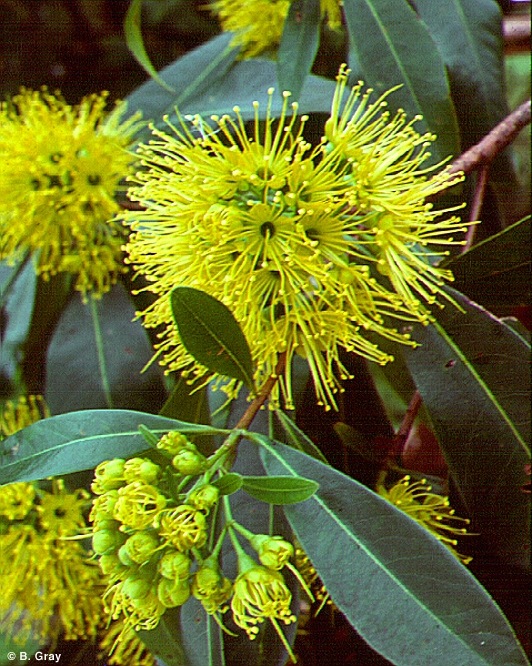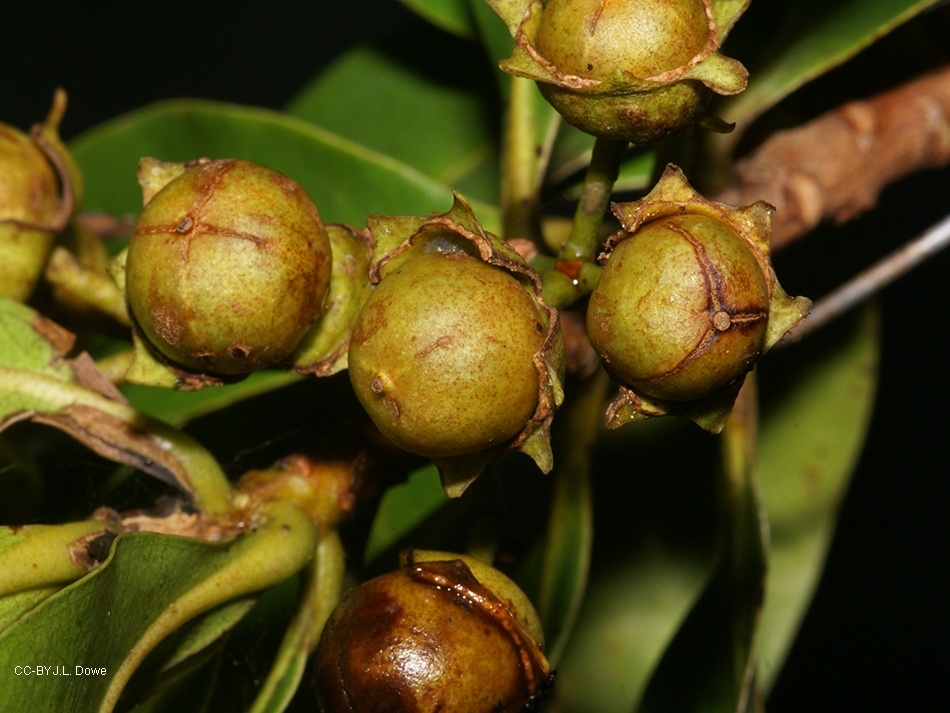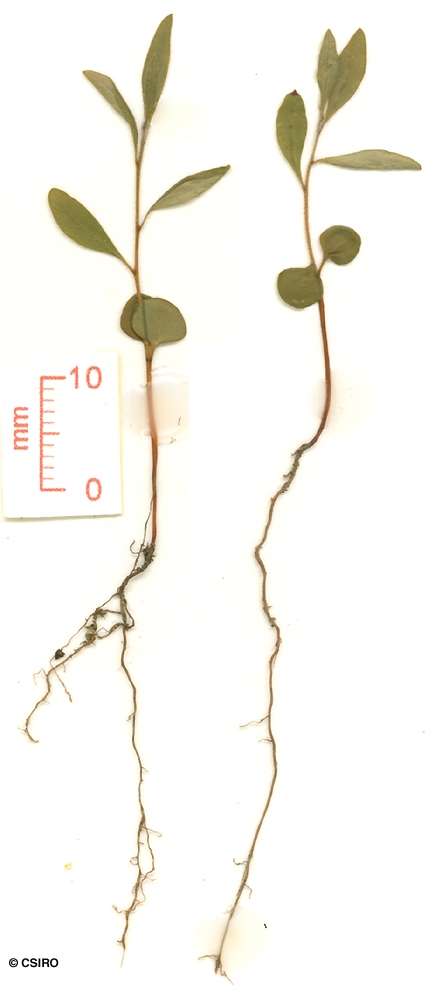Australian Tropical Rainforest Plants - Online edition
Xanthostemon chrysanthus (F.Muell.) Benth.





Bentham, G. (1867) Flora Australiensis 3: 268.
Golden Penda; River Penda; Penda, Johnstone River; Penda, Golden; Penda, Black; Johnstone River Penda; Black Penda; Brown Penda; Penda, Brown
Frequently found on creek banks where it is gnarled and poorly formed but developing into a well formed tree in other situations.
Numerous small brown oil dots visible with a lens if not visible to the naked eye. Leaf blades about 10-15 x 3-4.5 cm.
Calyx tube (hypanthium) glabrous, about 5-6 x 5-6 mm, lobes variable, one much larger than the rest, but most about 2-3 mm long, greenish, marked by pink or reddish oil glands. Petals glabrous, cordate or triangular, about 7-8 mm long, marked by pink or orange oil dots. Staminal filaments bright yellow, about 30 mm long, each inserted in an orifice in the base of the anther, anthers about 1.5 mm long. Ovary surrounded by the calyx tube (hypanthium), but not completely enveloped in it. Ovary glabrous, about 3-3.5 mm diam., green, marked by numerous oil glands. Placentas peltate. Style yellow, about 40-45 mm long. Stigma small and terminal.
Cotyledons +/- orbicular, about 3-4 mm diam. Oil dots very small, visible only with a lens about the margins. At the tenth leaf stage: leaf blade elliptic to obovate, apex acute, base attenuate, hairy on the upper surface; oil dots numerous, visible with a lens; petiole, stem and terminal bud clothed in long, pale hairs. Seed germination time 11 to 13 days.
Endemic to Queensland, occurs in CYP and NEQ. Altitudinal range from near sea level to 600 m. Usually grows as a rheophyte along creeks and watercourses in open forest and rain forest. In the McIlwraith Ranges, this species is found in well developed upland rain forest away from watercourses.
An excellent species widely cultivated in tropical and subtropical conditions. Grown for the masses of yellow flowers which attract birds. Plants flower even when very small.





